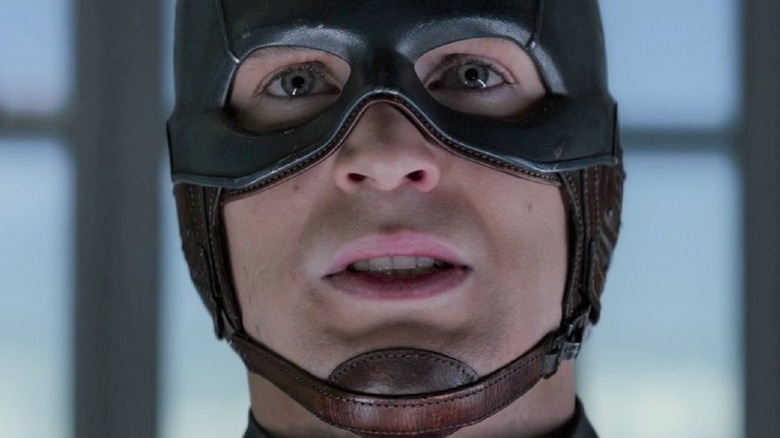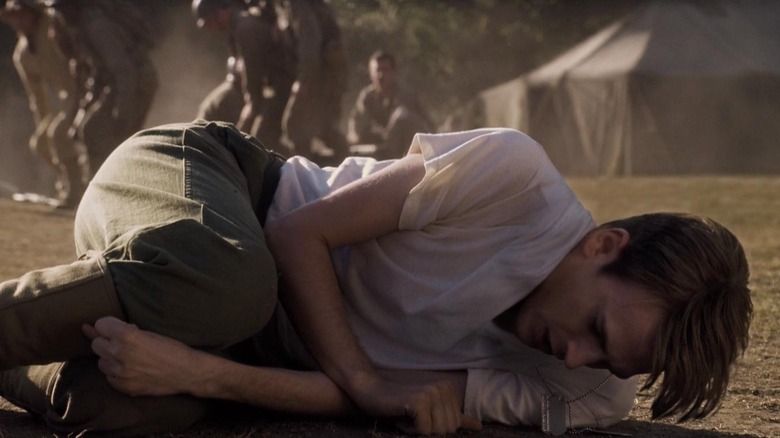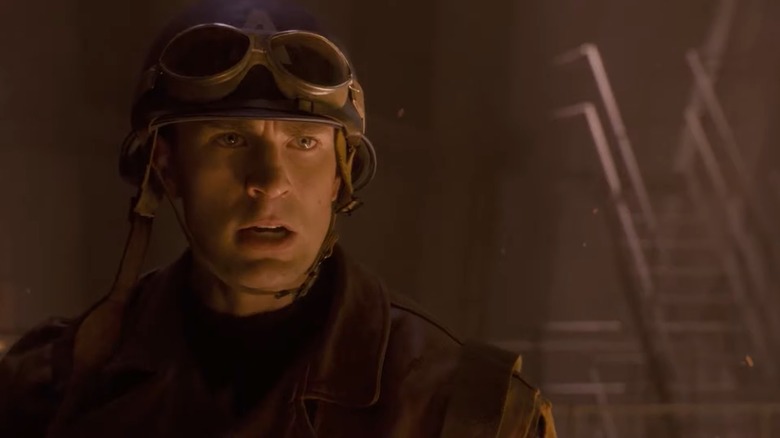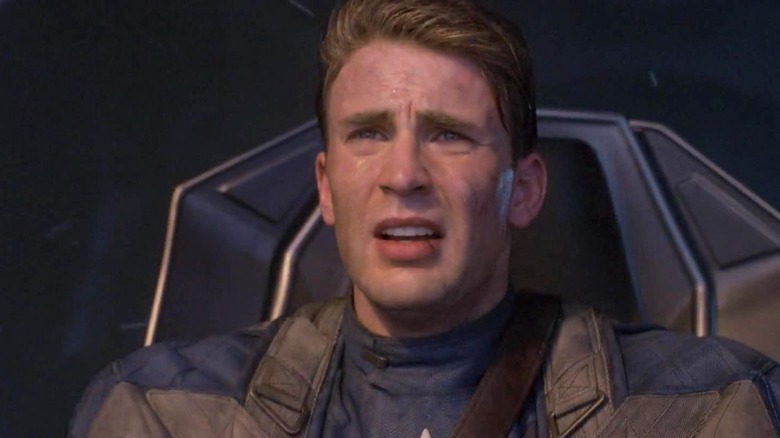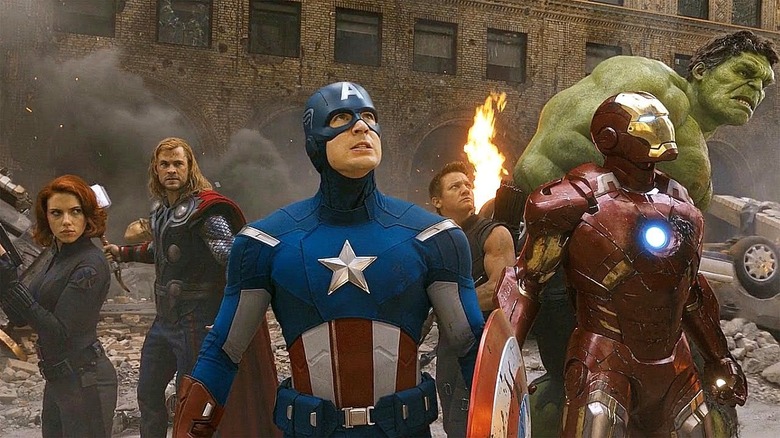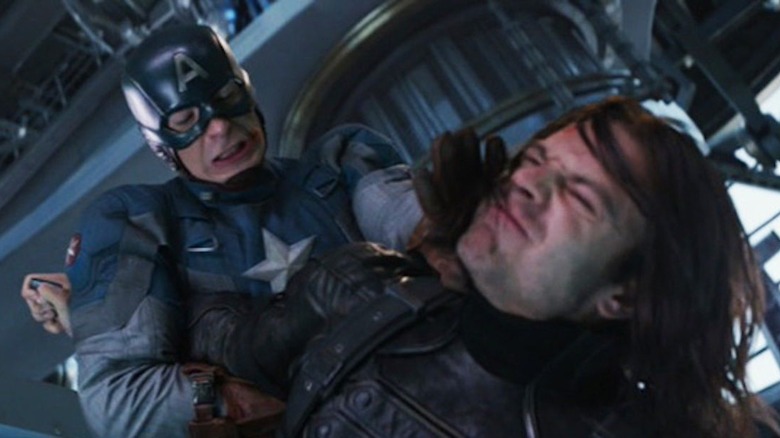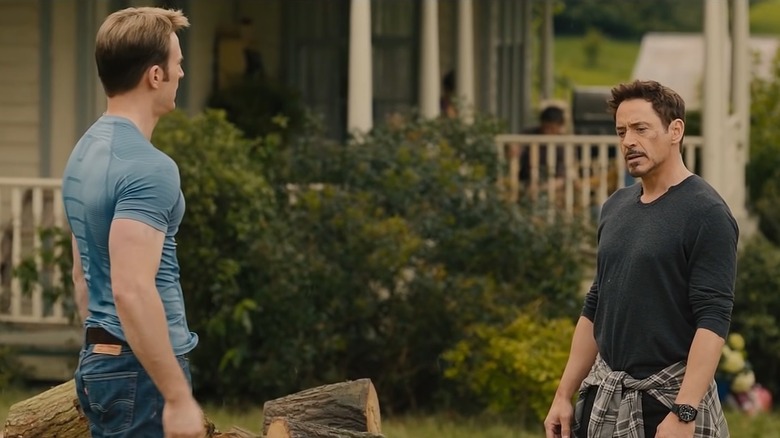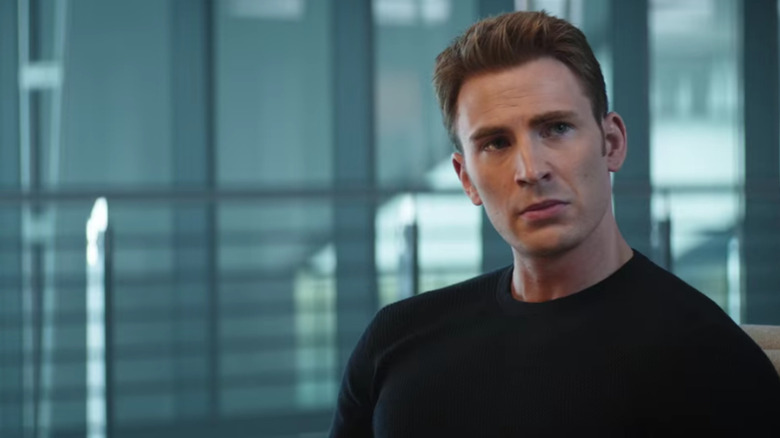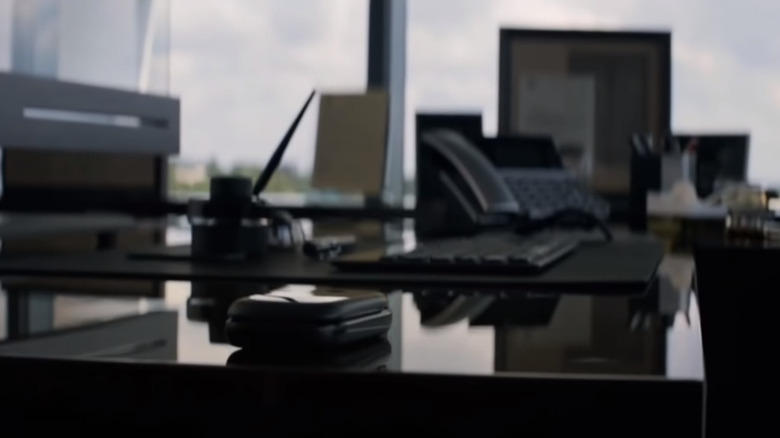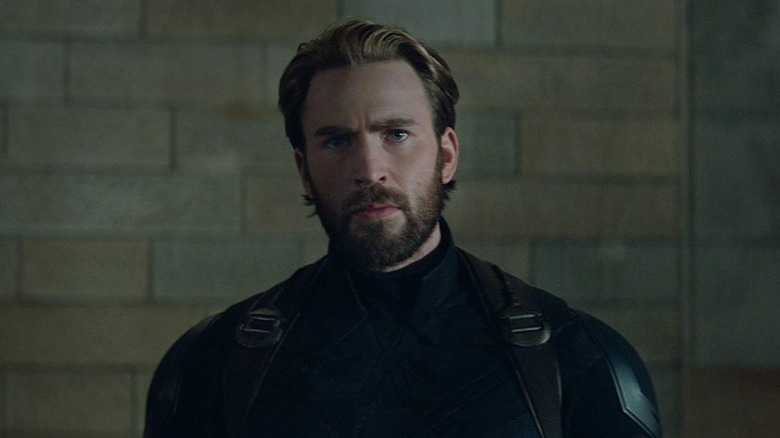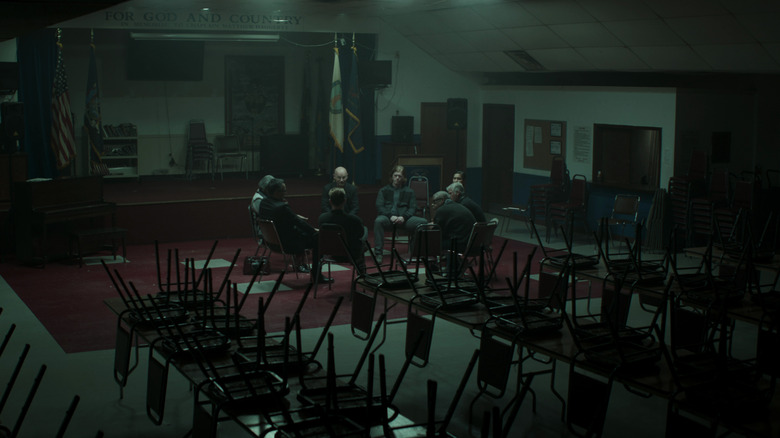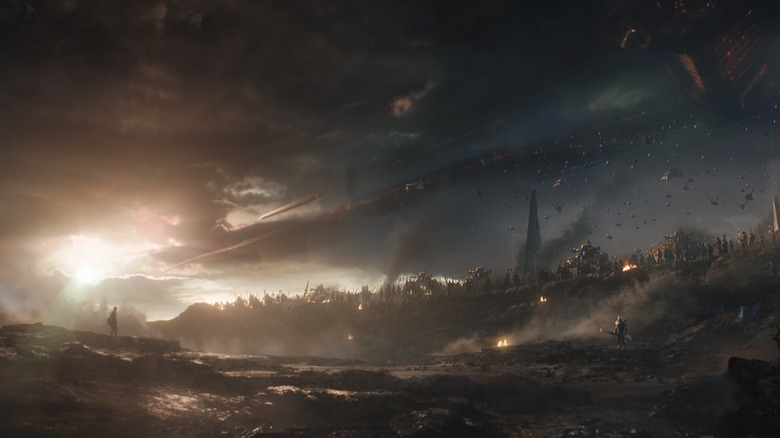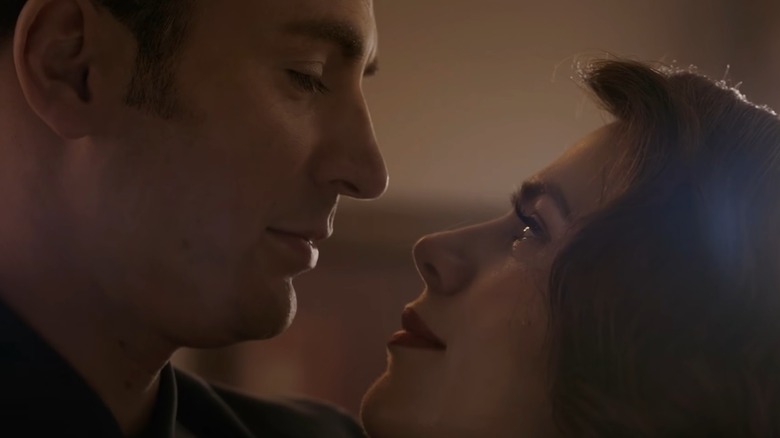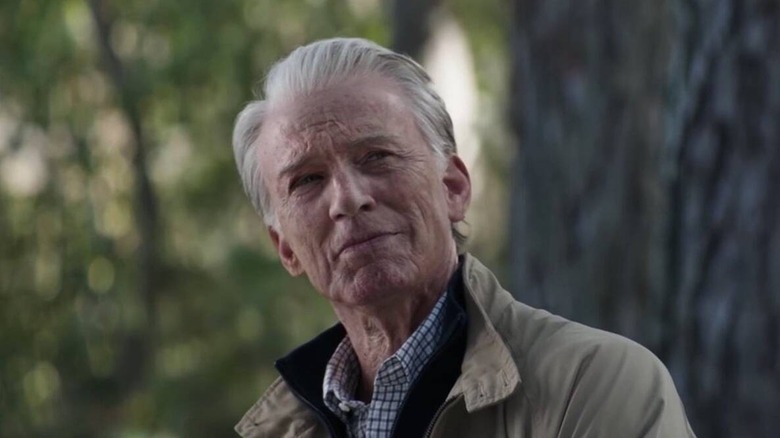The Best Decisions Captain America Made In The MCU
The Marvel Cinematic Universe is full of an ever-expanding roster of heroes, each of whom came by their abilities in different ways and all of whom have their own reasons and motives behind their heroism. But of them all, Steve Rogers might be the purest distillation of the heroic idea. A skinny kid from Brooklyn who volunteered to put himself in harm's way, Steve's willingness to do whatever it took to help others eventually led to his transformation into Captain America. From there, he endured decades frozen in ice, lost love, and adjusting to an entirely new era in order to fight alongside the Avengers and, eventually, save the entire universe.
But Steve wasn't just born a great hero. His road in the MCU is paved with choices, key decisions he had to make that would establish not just the kind of hero he would be but the kind of world he would shape as one of its most important figures. From simple sacrifices to world-changing struggles, these are the best decisions Captain America ever made in the MCU.
Warning — there are major spoilers below.
Falling on a grenade
Looking back on the superhero career of Steve Rogers, there are decisions he made and then there are things he did that just seem to be as natural as breathing. Rogers was a good fighter because he was able to perform under pressure, put the men around him first, and stand up to injustice, but what made him a true hero were the things he chose to do with only milliseconds of decision-making time. His decision to volunteer for the military as World War II raged was something he'd probably spent every day thinking about, but the first of these millisecond decisions we saw him make told us much more.
After he arrives at training for what he'll soon learn is the Super Soldier program, Rogers distinguishes himself as a determined young man who's willing to do whatever it takes to overcome his scrawny size and prove himself. Though Dr. Abraham Erskine is able to see his noble heart and fighting spirit right away, Col. Chester Phillips doesn't agree ... not until Steve jumps on what turns out to be a dummy grenade in order to protect those around him anyway. In being willing to instantly and selflessly sacrifice himself to save others, Rogers proved that he was worthy of becoming the First Avenger.
Joining the fight
Steve Rogers' entire career is in many ways defined not by following orders — or even by giving orders — but by his ability to determine which orders are actually worth listening to. After he becomes Captain America, Rogers is ordered to go on a war bonds tour rather than head to the front lines, which will allow American scientists to study him in an effort to replicate the success of his transformation. But when he finally lands in Europe to meet other troops, he learns that his best friend, Bucky Barnes, has apparently been captured along with numerous other men and that their loss has been dismissed as an inevitable cost of war.
It's here that Captain America is truly born, as Rogers realizes he has what it takes to save these men from certain death, despite what his superiors say. He secretly leaps into battle behind enemy lines, frees Bucky and numerous other soldiers, and returns to the Allied forces with a renewed sense of purpose, earning fresh respect from his fellow soldiers along the way. Was it an emotional decision in order to get his friend back? Sure. Did it establish him forever as a guy who was willing to circumvent power structures in order to do the right thing? Absolutely.
Putting down the plane
Early on in "Captain America: The First Avenger," we see Steve Rogers –- a scrawny kid from Brooklyn at the time –- dive on a grenade in order to save the lives of a few people standing near him. It turns out to be a dummy, but it's a good indication of his character. When the stakes are high, he's willing to put himself in harm's way.
Later in the same film, imbued with Super Soldier serum and having just proven himself a World War II hero across Europe, Steve decides he has to do the same thing yet again — this time on a grander scale. At the helm of a HYDRA plane loaded with weapons that could decimate American cities, Rogers sees only one choice: The plane has to go down with him on it. Despite Peggy Carter's pleas for him to bail out of the plane or find a way to land it or do anything else that might keep him alive, Steve realizes the best choice is to save the lives of others and not think of himself. So he says goodbye.
Fortunately for him, his Super Soldier body and a sheet of Arctic ice means that he doesn't actually die — he just spends a few decades in stasis. Still, it was a tough decision to make, and Steve didn't think twice.
Commanding the Avengers
Much of the runtime of "The Avengers" is devoted to the story of a team struggling to come together, not because they can't agree on their ultimate goals but because they have a hard time functioning as a unit after years of either solo work or years of serving as a cogs in a larger machine. Even when the death of Agent Phil Coulson motivates Earth's Mightiest Heroes to move as a unit, they aren't truly in sync as the fight begins.
That changes when Steve Rogers makes a conscious decision to take command of the Battle of New York. Surrounded by a seemingly endless wave of Chitauri and faced with the egos of his fellow team members, Rogers doesn't back down. He takes charge, directing his own forces to maximize their individual skills like a master tactician. The battle's not won yet, but by asserting himself and essentially claiming leadership of the Avengers, Captain America has not just turned the tide of the day. He's turned the tide of superheroism on Earth, for the moment at least.
Never giving up on Bucky
Steve Rogers spent decades frozen in ice while the world moved on, which means he's constantly confronted with reminders of how much things have changed. As a result, he's constantly faced with complex dilemmas that test his own personal moral code. One of the biggest of these dilemmas emerges in "Captain America: The Winter Soldier," in which Steve learns that his best friend, Bucky Barnes, didn't die in World War II has he always thought. Instead, he was revived by HYDRA and turned into a super soldier assassin dubbed "the Winter Soldier."
Ruthless, robotic, and seemingly unreachable thanks to years of brainwashing, Bucky now appears as nothing more than a soulless killing machine, but Steve looks past the Winter Soldier persona. He still sees his best friend, and he spends the rest of the film trying to reach him. It culminates in a battle on a Helicarrier over Washington D.C., as the Winter Soldier keeps pounding away at a man he used to know, all while Steve refuses to fight back. The two part ways but not before the Winter Soldier saves Captain America's life, putting Bucky on the long road back to redemption.
Pushing Tony Stark
One of the longest running themes of the early MCU is the frequent ideological clashes between Tony Stark and Steve Rogers. It begins in "The Avengers," as the two men argue over their respective heroic roles, but it continues well beyond that, through arguments in "Avengers: Age of Ultron," "Captain America: Civil War," and all the way through "Avengers: Endgame."
There are numerous facets to the argument, but it basically boils down to this: Tony believes that the right design is the key to keeping the world safe and believes that with proper systems in place, he can create "a suit of armor around the world" that will essentially eliminate personal risks to heroes and civilians alike. Steve, who lived through World War II and saw such systems of control used for evil, believes that "the safest hands are still our own" and argues that individual choices in times of great strife are what make a difference.
Of all their arguments, the most impressive might be in "Age of Ultron," in which Steve warns Tony of the frightening implications of his inventions, and he resists Tony's idea that heroes can just "go home" if they get the right protective formula in place. It's just one moment, but it creates a ripple effect that helps Tony become the person willing to sacrifice himself to save the whole universe in "Avengers: Endgame."
Resisting the Sokovia Accords
Tony and Steve's ideological arguments reach an apparent breaking point in "Captain America: Civil War," when Tony advocates for a new collection of regulations agreed upon by world leaders to keep superheroes like the Avengers "in check." Steve, who's been held back and betrayed by government agencies before, resists the idea, arguing that the statutes known as the Sokovia Accords could eventually tie the hands of heroes for political purposes, leaving them helpless in the face of great suffering. Tony, who's been confronted one too many times with the collateral damage of his decisions, feels like that might be a price worth paying.
The ideological battle eventually turns personal when the Winter Soldier gets mixed up in the fight thanks to the schemes of Helmut Zemo, who tries to pit the Avengers against each other. What's particularly interesting though, is that despite Bucky Barnes being Steve's best friend, Tony is the more emotional one thanks to Winter Soldier's murder of his parents back in the 1990s. By resisting the Sokovia Accords, Steve has actually placed himself on the side of cooler heads prevailing, of not rushing to judgement and nailing everything down. It breaks up the Avengers, but it eventually pays off with both Tony's growth and Bucky's redemption.
Leaving a phone behind
"Captain America: Civil War" culminates in a brutal fight that pits Iron Man against both Captain America and the Winter Soldier — the end result of Iron Man's personal vendetta against Winter Soldier for having (while brainwashed) murdered his parents years earlier. Iron Man loses that fight, but by the time he makes it back to the Avengers compound to recover, he finds that Captain America has sent him a message.
In a letter to Tony, Steve once again does his best to outline his faith in individuals, not systems, to get the job done and ultimately save the world, underlining a point that will eventually hit home for Iron Man in "Avengers: Endgame." He also makes sure Tony knows that he's just a phone call away and even leaves a phone behind so the now-leader of the Avengers can call him at any time. For a guy who's essentially just become an international fugitive, it's a gutsy movie, but it's the right call. Not only will Tony need that phone later, but it reconnects the two men in ways they don't necessarily realize until years later.
Forming his own team
At the same time he's sending a message to Tony Stark, letting him know that he'll be there for him any time Tony wants to call, Steve Rogers is also staging a prison break for his fellow fugitive Avengers. At the end of "Captain America: Civil War," he manages to bust out Scarlet Witch, Black Widow, and Falcon (Hawkeye and Ant-Man choose house arrest) and take them ... well, we don't know exactly.
However, by the time "Avengers: Infinity War" rolls around, we see that Cap and his crew have spent the last several years essentially working as a secret Avengers squad, living in hiding and taking on missions to help people when necessary. We don't know much about what these missions were, but we know that Cap both didn't give up on his fellow Avengers and didn't stop being a hero, no matter what the nations of the world tried to tell people about him.
Keeping the faith
By the beginning of "Avengers: Endgame," Steve has fought a battle for the fate of the universe and ... lost. Despite an Avengers reunion in Wakanda, Thanos managed to gather all the Infinity Stones and snap half of all life out of existence, then destroy the stones in the aftermath, leaving the surviving Avengers helpless.
Five years later, the world looks much different. Half the population is gone, the remaining Avengers are spread thin trying to manage various crises, and Steve Rogers is spending a good chunk of his time in New York City working with a support group for survivors still struggling with how to move on. It's touching, in part because it's what his fallen friend Sam Wilson would probably be doing, but it's also a decision that goes a little deeper.
Talking with Natasha Romanoff about the state of the world, Steve explains that while he's telling others to move on in order to help them live their lives, he doesn't believe that he can move on. It's sad, but it's also more evidence of his willingness to never give up on people, including the ones he's lost. A part of Steve will always keep fighting.
Standing alone against Thanos
"Avengers: Endgame" spends much of its runtime as a time-spanning sci-fi heist epic, as the surviving members of Earth's Mightiest Heroes journey throughout history to recover the Infinity Stones and reconstruct the Infinity Gauntlet so they can undo what Thanos did five years earlier. The problem, of course, is that the Thanos of the past eventually figures out their plan, realizes his own apparent destiny, and engineers a way to get to the present so he can claim the stones for himself.
Though Iron Man, Captain America, and Thor put up a good fight, Thanos eventually holds on long enough to summon his entire army, and for a brief moment, everything seems lost. But that doesn't stop Steve Rogers from picking himself up, tightening the straps on his now-broken shield, and standing, seemingly alone, against an entire army. Is it a symbolic gesture? Maybe. Was he always going to end up getting help thanks to some perfectly timed storytelling? Sure. But Steve Rogers has always stood up to bullies, no matter how impossible the odds seemed, and seeing him do it one more time is one of the MCU's great moments.
Staying with Peggy
By the time of "Avengers: Endgame," Steve Rogers has spent decades fighting, first in World War II and then in the strange global superhero war that began with the Battle of New York. He's saved not just cities, not just planets, but an entire universe. He's been there for his friend, redeemed a few of his enemies, and managed to survive it all with his sanity and his own sense of right and wrong intact. Put simply, he's earned a break.
"Avengers: Endgame" concludes with the reveal that Steve volunteered to take the Infinity Stones back to their respective timelines, then used his last bit of Pym Particles to go back to the 1940s and reunite with Peggy Carter, completing the love story he started and never got to finish in his first life. For a guy who's spent such a long time denying his own pleasure in order to help other people, it feels like the right choice, particularly when you consider how hard it must've been for him to make it in the first place.
Giving Sam the shield
After going back in time to spend the rest of his days with Peggy Carter, Steve Rogers arrives back in the present day just moments after he left, now an old man, with his rejuvenated Captain America shield in tow. His old partner Sam Wilson goes to check on him and finds that Steve not only lived out a nice long life, but he's come back with the intention of naming a successor. With very little fanfare, Steve offers Sam the shield and says, "Try it on."
In Marvel Comics, both Sam Wilson and Bucky Barnes have served as Steve's Captain America successor at various points, but in the MCU, Steve chooses Sam, with the implication that he spoke with Bucky offscreen about what he intended to do. Though Sam is reluctant at first, he accepts the shield and tells Steve, "I'll do my best." Sam responds by saying, "That's why it's yours."
Steve could have chosen Bucky, his fellow Super Soldier, to be the next Captain America, but instead, he offered the shield to Sam because he knew how hard Sam would work for it, how much his own moral code would push back against the challenges he'd come to face. Steve didn't pick the strongest guy, but he did pick the most determined because he saw something of himself in Sam's willingness to keep getting back up.
